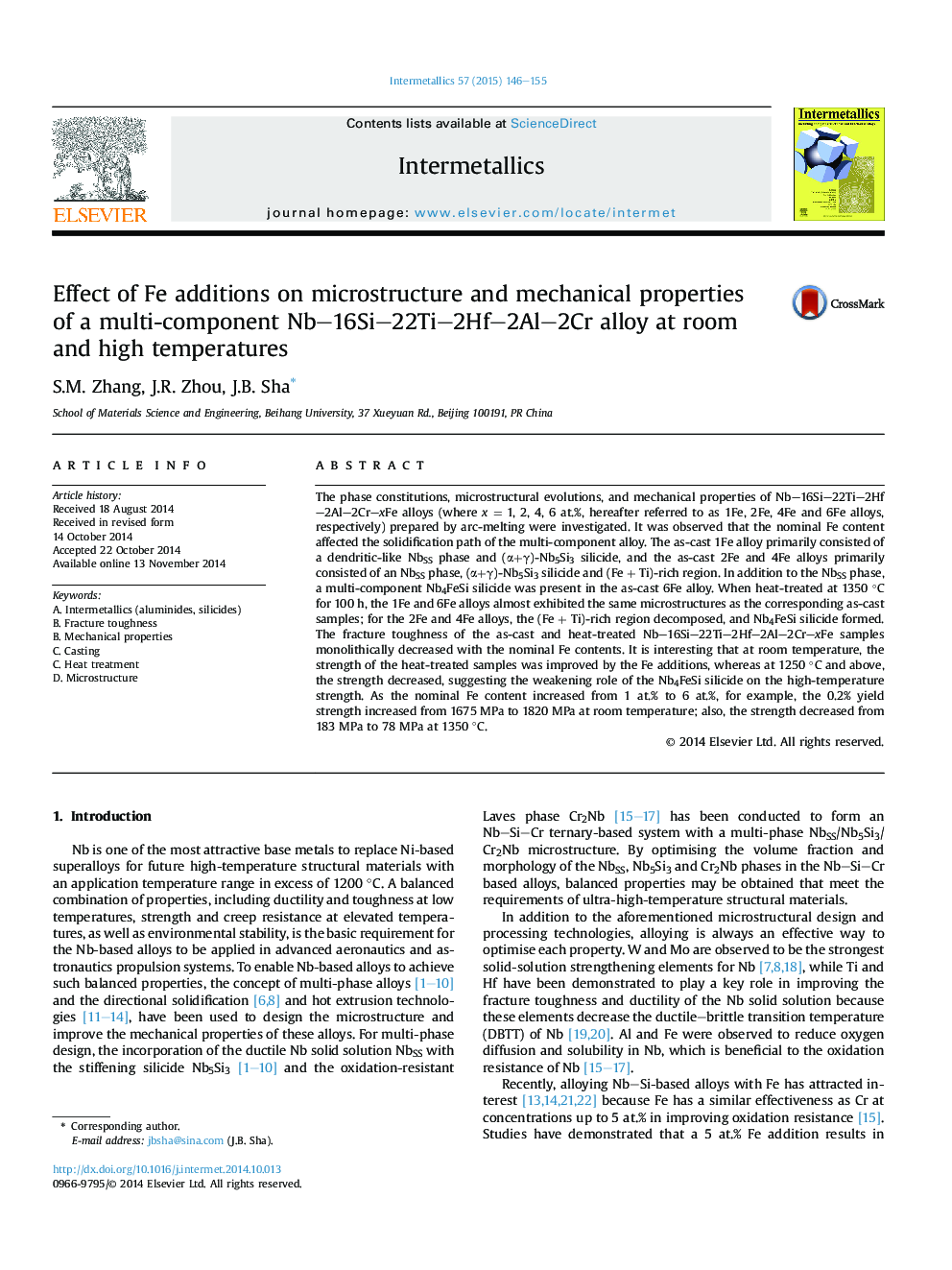| کد مقاله | کد نشریه | سال انتشار | مقاله انگلیسی | نسخه تمام متن |
|---|---|---|---|---|
| 1599917 | 1515854 | 2015 | 10 صفحه PDF | دانلود رایگان |

• Microstructure of Nb–16Si–22Ti–2Hf–2Al–2Cr–xFe alloys is studied.
• With Fe additions, Nb4FeSi silicide forms in addition to NbSS and Nb5Si3.
• The solidification path dependent on the Fe content is primarily proposed.
• At room temperature strength of the bulk alloy is improved by the Nb4FeSi.
• At 1250 °C and 1350 °C, strength of alloy decreases with the Fe additions.
The phase constitutions, microstructural evolutions, and mechanical properties of Nb–16Si–22Ti–2Hf–2Al–2Cr–xFe alloys (where x = 1, 2, 4, 6 at.%, hereafter referred to as 1Fe, 2Fe, 4Fe and 6Fe alloys, respectively) prepared by arc-melting were investigated. It was observed that the nominal Fe content affected the solidification path of the multi-component alloy. The as-cast 1Fe alloy primarily consisted of a dendritic-like NbSS phase and (α+γ)-Nb5Si3 silicide, and the as-cast 2Fe and 4Fe alloys primarily consisted of an NbSS phase, (α+γ)-Nb5Si3 silicide and (Fe + Ti)-rich region. In addition to the NbSS phase, a multi-component Nb4FeSi silicide was present in the as-cast 6Fe alloy. When heat-treated at 1350 °C for 100 h, the 1Fe and 6Fe alloys almost exhibited the same microstructures as the corresponding as-cast samples; for the 2Fe and 4Fe alloys, the (Fe + Ti)-rich region decomposed, and Nb4FeSi silicide formed. The fracture toughness of the as-cast and heat-treated Nb–16Si–22Ti–2Hf–2Al–2Cr–xFe samples monolithically decreased with the nominal Fe contents. It is interesting that at room temperature, the strength of the heat-treated samples was improved by the Fe additions, whereas at 1250 °C and above, the strength decreased, suggesting the weakening role of the Nb4FeSi silicide on the high-temperature strength. As the nominal Fe content increased from 1 at.% to 6 at.%, for example, the 0.2% yield strength increased from 1675 MPa to 1820 MPa at room temperature; also, the strength decreased from 183 MPa to 78 MPa at 1350 °C.
Journal: Intermetallics - Volume 57, February 2015, Pages 146–155